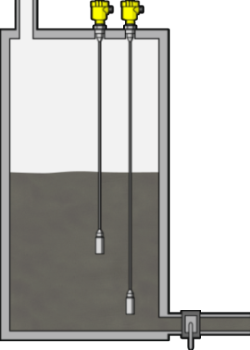Using Differential Pressure to Measure Liquid Level When Density Changes
Welcome to our third and final installment of our blog miniseries on pressure and density. When we embarked on this journey, we discussed how extreme temperatures can change product density, introduce error to the hydrostatic formula, and render a level measurement inaccurate. We then explained how to use differential pressure to determine the density of a liquid as it was changing in a vessel. Here, in our final edition, one obvious question remains: How do we put these two things together easily to provide a density-compensated level? VEGA has the answer!
Electronic differential pressure does it all
For the user, this means direct connections to the vessel with no capillary or impulse lines, no additional signal conditioner to do the conversions, and no math to be done in the control system. The overall level based on the current density of the product is output directly from the head of the instrument. To understand the practical benefits of the DCL system, let’s look at an industry where measuring liquids of changing densities is the norm: metals mining.
Success in Metals Mining
Using a standard flotation ball, elevated target, and ultrasonic sensor system to control the froth level has been the standard procedure in mines across the United States and South America. Operators control fluid density by following a table of mixing rates and aiming to keep froth thickness near a certain level for maximum efficiency. With the ball floating where the agitated surface of the liquid interfaces with the bottom of the froth, the target’s elevation changes rapidly. This volatility often results in measurement error.
Our density-compensated level solution accurately monitors the overall level of the fluid mixture in a flotation cell, which provides froth thickness. Plus, real-time tracking of the mixture’s density allows mining industry professionals to compensate for froth level on the fly. Installation and setup of the system can take less than an hour to complete, and density-compensated level has produced lower maintenance costs, higher reliability, and more confidence in the measurement output in metals mines in the U.S. and beyond. Watch the animation below to learn more.
These operational improvements are possible for any application where liquid changes density and they would not be possible without differential pressure.
Finding Density-compensated Level with Electronic Differential Pressure in a Froth Flotation Cell
We need your consent
This content is provided by an external provider. If you activate the content, personal data may be processed and cookies set.
Export this article
Download as PDFShare this article
Comments ({{comments.length}})
{{getCommentAuthor(comment, "Anonymous")}} {{comment.timestamp | date : "dd.MM.yyyy HH:mm" }}
{{comment.comment}}






